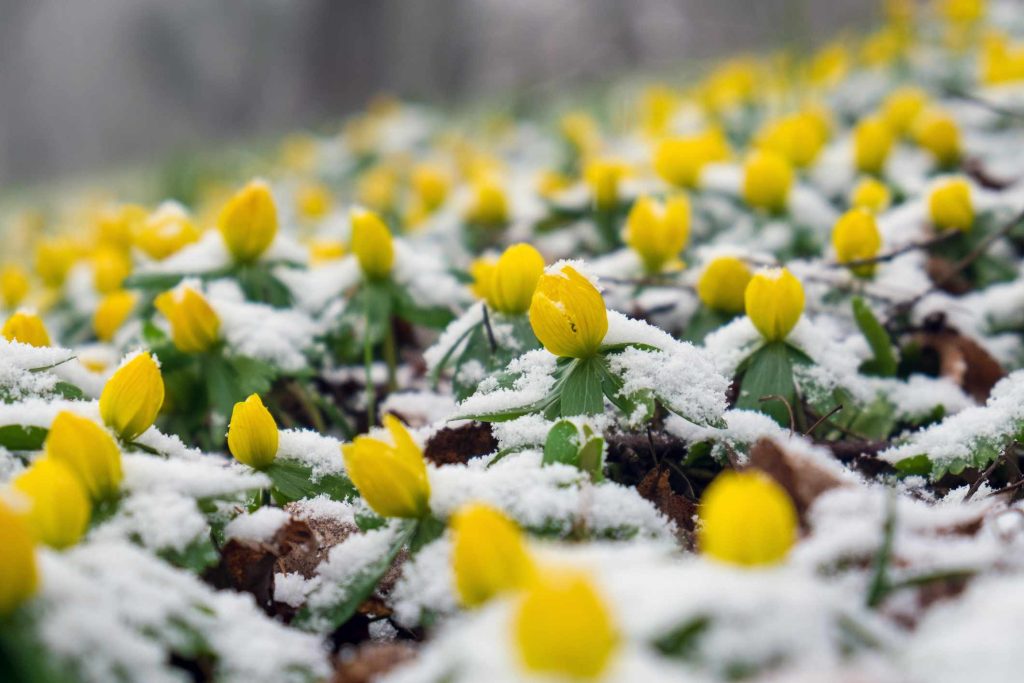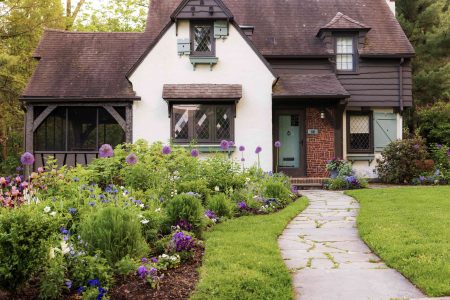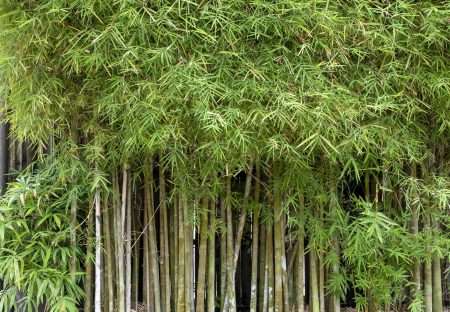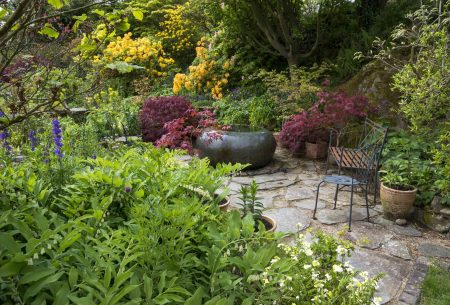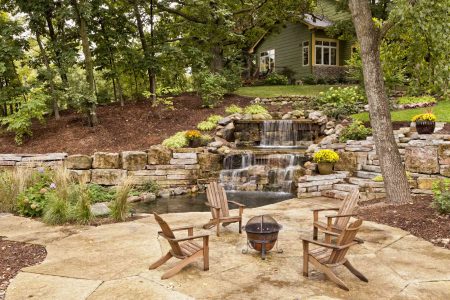Your yard doesn’t have to go unnoticed just because it’s cold and dark this winter. Check out these winter landscaping ideas to add color, texture, and interest to your yard or garden.
Want more gardening tips? Sign up for our free gardening newsletter for our best-growing tips, troubleshooting hacks, and more!
-
01
of 12Use Evergreens
Evergreens truly live up to their name. With tough, wavy leaves or needles, evergreens have evolved over millennia to adapt to the harshest conditions. Plant boxwoods, holly, arborvitae, yew, juniper, or any other type of evergreen as a dependable, low-maintenance winter landscaping idea.
-
02
of 12Rely on Hardscaping
Hardscaping is anything in your landscape that isn’t alive, and this includes functional but decorative elements like flagstone paving, decks, water features, retaining walls, and patios. Winter is the perfect time to focus on installing or enjoying any of these hardscaping ideas.
-
03
of 12Plant Winter-Hardy Flowers
Flowers are associated with spring, but winter has a full complement of beautiful flowers and flowering plants, too. Choose winter flowers like primrose, winter aconite, camellia, snowdrops, or winter heath to keep your yard vibrant and fresh-looking all through the winter.
-
04
of 12Grow Winter-Friendly Container Plants
Container plants are great landscaping ideas for winter. Move pots with sensitive plants indoors before a freeze or wrap the pots with burlap as insulation. Leave the pots outside if they have winter-hardy plants like rosemary, holly, or cyclamen, among others.
Continue to 5 of 12 below -
05
of 12Install Synthetic Turf
Artificial grass remains green all through the winter, unaffected by snow, ice, or lack of sun. Many types of synthetic grass look more like real grass than ever. While you can install your own artificial grass, this exacting project is often best left in the hands of qualified installers.
-
06
of 12Plant Window Boxes
Take your windowbox through all four seasons with winter window box ideas:
- Evergreen boughs
- Candles
- Pine cones
- Dried flowers
- Berry sprigs
-
07
of 12Lay Colorful Mulch
Mulching your yard is crucial for keeping your plants healthy during the winter. Mulch insulates roots against freezing temperatures and holds in moisture. Adding colored mulch—mulch that’s dyed brown, red, black, gold, or red—paints staid winter landscapes with swaths of color.
-
08
of 12Grow Colorful Winter Shrubs
Winter shrubs grow without interruption from December to February and beyond. Shrubs like inkberry stay fresh and green. Other shrubs, like red twig dogwood, add delightful crimson slashes to a neutral winter landscape.
Continue to 9 of 12 below -
09
of 12Brighten With Outdoor Lighting
Holiday lighting is popular during winter, but you can also take your lighting to the next level with garden lighting ideas like:
- Globe lights: Otherworldly orbs illuminate plant beds.
- Lantern lights: Hovering classic lights mark paths.
- Uplights: Spotlight favorite plants.
- Pond lights: Glowing water or ice.
-
10
of 12Grow Tall Grasses
Avoid a dormant winter grass lawn with lawn alternatives that stay lively through the cold months. Long grasses like Chinese silver grass overwinter quite attractively. Sedge or Carex plants are perennials that remain unfazed throughout the winter due to their tough rhizome root systems.
-
11
of 12Build a Firepit
In winter, gather around the fire for s’mores, hot cocoa, or maybe a glass of wine. Everyone will stay toasty around a simple firepit that you build yourself in a day with retaining wall blocks. Or, make a different type of DIY firepit out of found items like flagstones, a terrarium, concrete pavers, or even a beer keg or part of a washing machine.
-
12
of 12Use Berries and Bark
Berries, like chokeberries, are popular winter landscaping ideas due to their bright colors and waxy, thick skins. Red tends to be the most prevalent winter berry color in the form of currants, Linden viburnum, cotoneaster, bunchberry, and numerous types of holly plants.
-
What kind of landscaping can be done in winter?
The kind of landscaping done in winter revolves around planting and tending to winter-hardy shrubs and evergreens, installing hardscaping materials like flagstones, adding freeze-resistant plants to containers, and planting tall grasses and berries.
-
What months are best for landscaping?
Spring (from late March to May) and fall (late September to November) are the best months for landscaping. In spring, you can plant planting trees, shrubs, and perennials, and the conditions are favorable. In fall, with milder weather, the roots of new plants can take hold. It’s also a good time to establish new grass.
-
How can I make my yard look nice in fall?
The best ways to make your yard look nice in fall are to clean up fallen debris like limbs, rake up leaves, mulch garden beds, prune trees, and plant colorful plants and flowers like chrysanthemums.
Read the full article here







